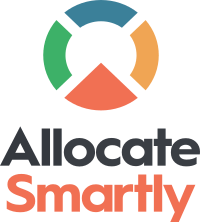In 2016 our team launched Allocate Smartly, the gold standard resource for curating, verifying and tracking “Tactical Asset Allocation” (TAA) strategies. Unlike a static buy and hold portfolio, TAA dynamically adjusts asset allocation based on changing market conditions.
We recognize however that not all investors are able to or interested in trading as frequently as TAA requires. Even for those investors who do employ TAA strategies, there may still be a need for a stable, static allocation to form the core of the portfolio.
Much ink has been spilt over creating the optimal buy and hold allocation, and there are many popular choices: the Permanent Portfolio, the All-Weather Portfolio, etc. But all of these conventional approaches share a fatal flaw: we judge them based on their performance during the last four decades of high/falling interest rates.
Bonds are key to a diversified portfolio, but we know that they face stiff headwinds in the coming years. It’s very rare thing in investing that we can say with mathematical certainty that an asset will not behave as it has in the past. While TAA strategies can rotate out of bonds when they underperform, making future bond weakness less of a concern, that’s not so with buy and hold. We knew that our portfolios needed to be based on interest rates as they stand today.
We were further inspired by the work of Corey Hoffstein of Newfound Research to look at employing Subset Resampling to reduce the estimation error inherent in creating buy and hold portfolios. Corey’s work was in turn based on the paper Portfolio Selection via Subset Resampling by Shen and Wang. Corey is one of the smartest people we know in the asset allocation space, and you should follow him now. Links for further reading follow:
By combining these two unique features: currentized bond returns and subset resampling, we’ve built a unique solution that we believe is a giant leap forward in portfolio design. This site is, and always will be, a perpetual work in progress, and we looking forward to continuing to expand upon what we’ve built here in the coming years.

